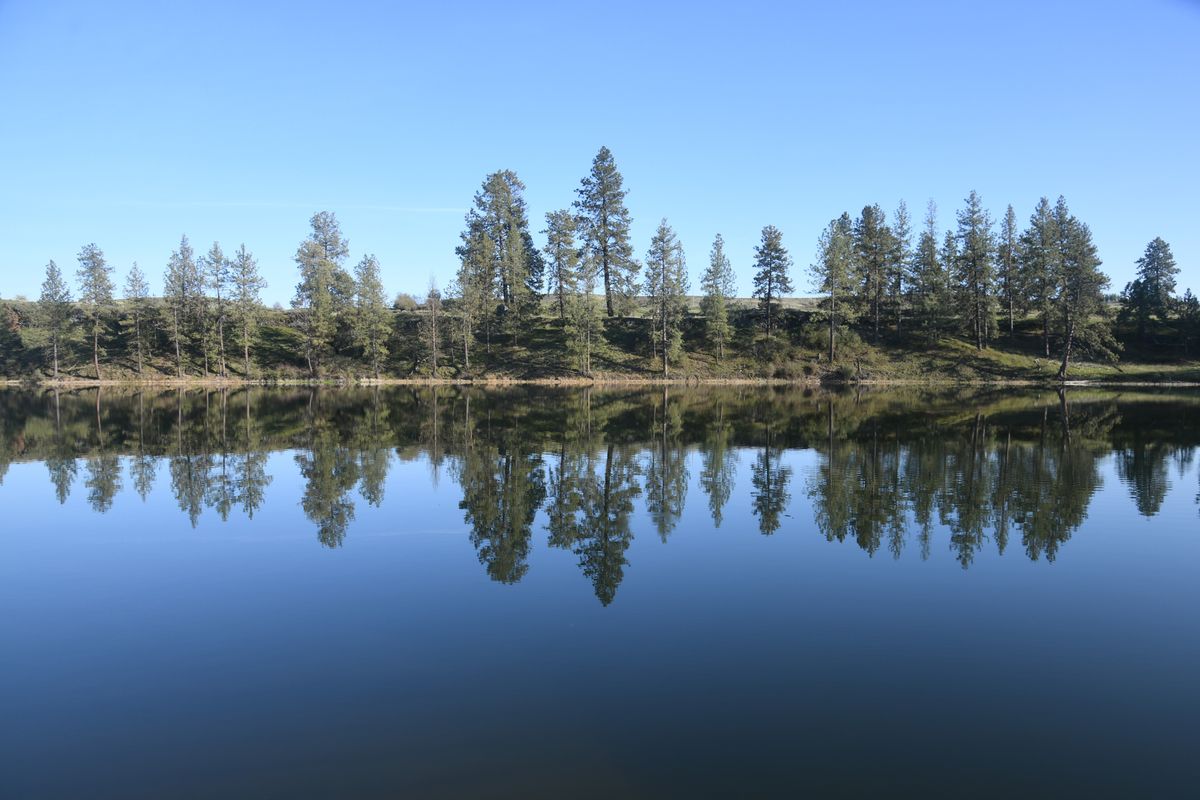Michael Wright: At the mercy of the wind
Wind is the enemy of anglers who use float tubes. It doesn’t matter if the tube is a doughnut-shaped belly boat or a U-shaped luxury vehicle. It’s still part tumbleweed.
High winds are dangerous for any watercraft. Float tubing in heavy chop is a bad idea. But even breezes and gusts that don’t make big waves can turn a day of lake fishing into a miserable leg workout.
A certain amount of wind is manageable. Preferable, even. For me, a perfect day looks like this: Kick my tube into a light wind, convince several big fish to eat flies, then crack a beer and sit back while the wind carries me back to the boat ramp.
I don’t know the magic number. Wind speeds in the high teens are definitely too strong. Speeds around 10 mph – or maybe ranging between 5 mph and 15 mph – seem doable. Sometimes, the only way to find out is to go.
The wind was light on a recent Monday at Amber Lake. It was blowing the wrong way, though. I wanted to fish a small bay south of the boat launch. The wind was blowing south – so while it could help me get there, it could make returning to shore at the end of the day a major chore.
I settled for moseying around the water in front of the launch. A few other anglers were out, and we had the normal yelling conversations about how things were going. An angler fishing from shore hooked a nice fish on a water boatman. Another paddling a pontoon boat had some luck with a small woolly bugger. Fish were rising occasionally. Overall, though, fishing was slow. I ended up hooking one.
The water was cold and I had dinner plans, so I was back on shore by about 5. There were a lot of bugs in the air and a bunch of spent shucks in the water. A guy who had just trailered his johnboat said he saw some big mayflies earlier in the day, maybe a form of black callibaetis.
He mentioned it was possible that there would be a spinner fall – a short window in which thousands of mayflies die and fall on the surface of the water, where they become fish food.
I glanced over at the bay I’d planned to fish. Fish seemed to be rising steadily, maybe a quarter-mile from the ramp. The wind had weakened to almost nothing at this point, just a faint and occasional breeze. The water was glassy.
I thought about getting back in the tube and going after them. Then I remembered the dinner plans and the possibility that the wind would regain strength.
Over the next couple of days, I asked a few people what that hatch might have been. There was no consensus. Some were sure they could be callibaetis, a big gray mayfly that can make for epic fishing. Others said it was too early for that hatch, and that the bugs had to be chironomids.
Whatever they were, I figured going back and staying later would present another chance.
A few days later, the wind was still blowing the wrong way. It was a little stronger, but not impossible to manage. I decided to let it blow me into the bay I wanted to fish, thinking it would eventually weaken and give way to golden hour flatwater magic.
About an hour before sunset, it became clear that nothing was going to happen. There were no spent shucks in the water. No bugs in the air. No steadily rising fish.
And the wind never died down. I fought it all the way back to the boat launch.

